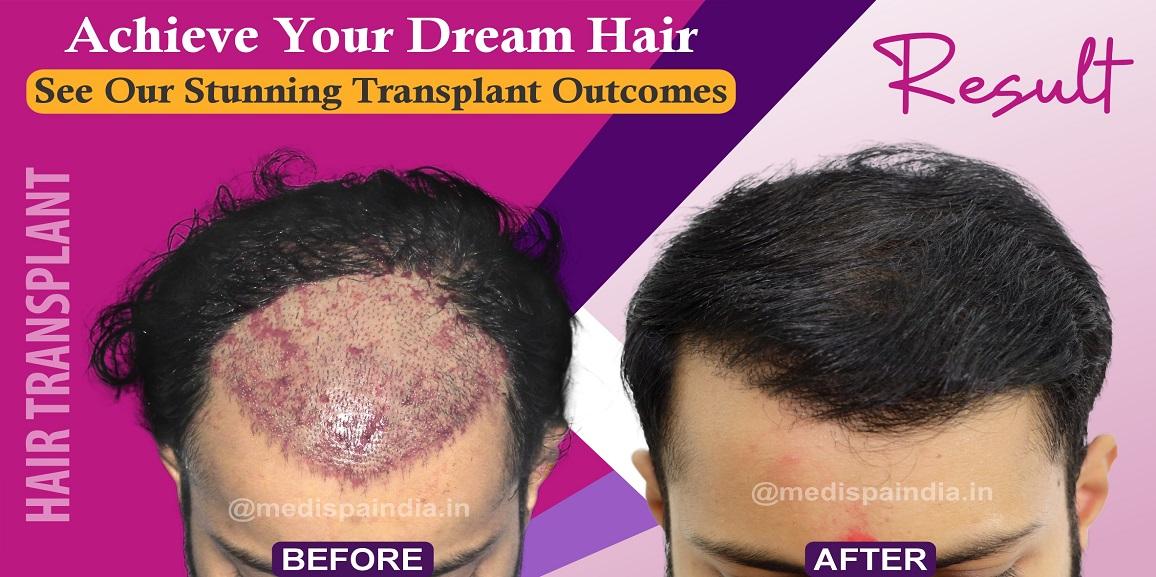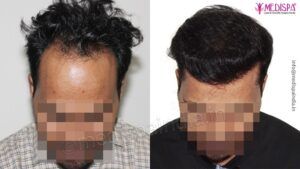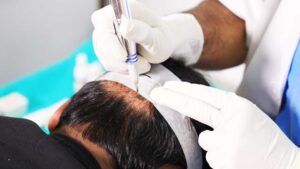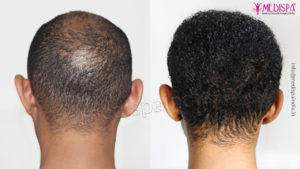
There are many ways to treat hair loss, including prescription drugs and short-term solutions like wigs, extensions, hair patches, and artificial hair. Temporary aids are methods that give quick results but are unsuitable for long-term use because they require a lot of upkeep and frequent replacement.
One of the most significant factors contributing to the popularity of hair transplant in India is that the results are permanent and completely natural. The procedure is definitely worthwhile because of the amazing and satisfying results of the hair transplant. The hair transplant cost in India has decreased significantly, which has increased the number of people choosing this option.
Since 2005, the Medispa hair transplant clinics in Delhi and Jaipur have been providing consistently amazing results for hair transplants, making them leaders in the industry. Both among domestic and foreign patients, we enjoy a high level of recognition. We feel fortunate to have the opportunity to work with many well-known celebrities because of our expertise in this area, which has made us a hair transplant clinic of choice for celebrities.
Since his hairline designing is extraordinary, Dr. Suneet Soni has received widespread acclaim for his excellent and professional skills. He has been referred to as a “master of artistic skills” due to his artistic sensibility, and a sizable number of patients approach him every year for hair transplants.
So, if you have any questions about the hair transplant procedure or are looking for a trustworthy and ideal hair transplant surgeon, visit Medispa Hair Transplant Clinic right away to speak with Dr. Suneet Soni, who is considered to be the best hair transplant surgeon in India.
What exactly is a hair transplant?
A simple surgical procedure called a hair transplant is used to fill in bald spots on the head, neck, or other parts of the face. Hair grafts are removed from the donor areas and precisely shaped into the hairline before being implanted into the bald spot.
It is a restorative process that relocates hair follicles from areas with higher densities of permanent root bearing locations to the bald area; it has nothing to do with replacing hair follicles that are lost during hair loss. The transplanted hairs do not experience hair loss like other nearby, healthy hairs, and hair transplant procedures thus produce long-lasting, permanent effects.
What occurs to newly implanted hair follicles after a hair transplant?
Following a hair transplant procedure, newly transplanted hair follicles go through the four phases of the normal hair growth cycle: anagen, catagen, telogen, and exogen. The growth cycle of each hair follicle may be in a different stage. Once implanted, it will continue through its cycle depending on where it is in it, and as a result, grow in accordance. So, the rate of hair growth varies from person to person and from hair follicle to hair follicle.
Following a hair transplant, the hair follicles grow in the following order:
Week 1: In order to get the best hair transplant results, the patient must carefully adhere to the postoperative instructions for the entire week. The patient may experience slight redness and swelling in the sides, back, and forehead, which typically go away in 4-5 days. Following this, crust or flakes form around the newly transplanted hair follicles, which vanish approximately 10 days after the procedure.
Weeks 2-3: This is also known as the shock period because you will see that all of your newly transplanted hairs are falling out and you may begin to believe that your hair transplant was a failure. But don’t worry, the cycle of hair growth is typical, so your efforts weren’t in vain. Only the hair shaft loses, leaving the hair follicles unharmed, further preparing them to produce new hair shafts.
Week 1 through Week 2: During this period, hair follicles enter a phase of rest and do not show any outward signs of change on your balding region. People frequently experience disappointment at this period since they appear precisely the same as they did before to the procedure.
Months two to four: When you start to notice brand-new, fine hair shafts emerging from the bald spot, there is some optimism. Earlier and later, the thin hair shaft starts to show.
Sixth month: At this point, the process reaches its pinnacle and a sizable volume of hair is growing in the bald area.
Month 6–9: The donor region has fully recovered at this point, and a sizable bald area may be seen to be covered in hair. The thin hair shafts alter in texture and thicken in the latter months.
1 year: By the end of the first year, 80% of the hair growth is visible, and as the volume of hair continues to grow, a fuller appearance develops.
How long must one wait for complete growth?
So sure, it will take about a year to attain the appearance of your dreams and restore your confidence, which was previously shaken by hair loss. This wait time is well worth it if you picked the correct surgeon and clinic.
| 3 months | 10% |
| 4-5 months | 20-30% |
| 6-7 months | 40-50% |
| 8-9 months | 60-70% |
| 10-12 months | 80-90% |
Table depicting Hair transplant regrowth rate
Why should you pick Medispa for the hair transplant of your dreams?
- The hospital’s highly skilled and creative in-house surgeon, Dr. Suneet Soni
- A modern operatory
- Internationally standardized hygiene
- New technology for superior outcomes, such as a video aided microscope
- Skilled professionals
We make all of these small sacrifices in order to provide you the finest experience possible and convince you that the wait was worthwhile. In addition to all of these, we believe in providing the greatest care while considering your comfort at a reasonable price.





